|
Secondary growth begins with the initiation of the vascular cambium, a cylinder of meristematic tissue that produces additional xylic and phloic tissues. The cells that eventually form the vascular cambium come from two sources, the procambium in the vascular bundles and the interfascicular parenchyma cells between vascular bundles. The diagram below shows the positions of these two populations of cells
in a stem with only primary growth. |
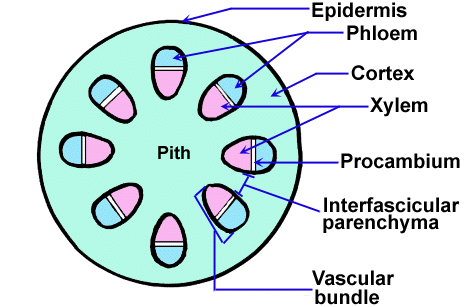
|
|
The vascular cambium forms when the cells of interfascicular parenchyma dedifferentiate and divide periclinally, in a plane parallel to the surface of the stem. The cells in the procambium divide in a similar fashion. The following diagram depicts the periclinal divisions in the procambium and the interfascicular parenchyma. |
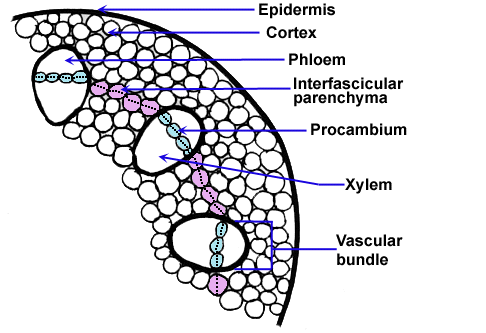
|
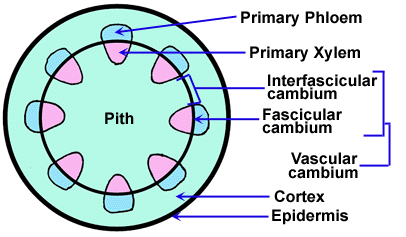
|
The two populations of dividing cells unite to form a continuous ring of dividing cells, the vascular cambium.
|
|
If we look closely at the cells of the vascular cambium we see two patterns of division. Initial cells can undergo multiplicative divisions (red line in the following diagram) or they can undergo additive divisions (blue line). Multiplicative divisions produce more initial cells and result in the increased circumference of the vascular cambium. Of the two cells produced from an additive division one is retained as an initial cell that will divide again, and the other will become a phloem mother cell or a xylem mother cell. These mother cells will differentiate into their respective cell types. |
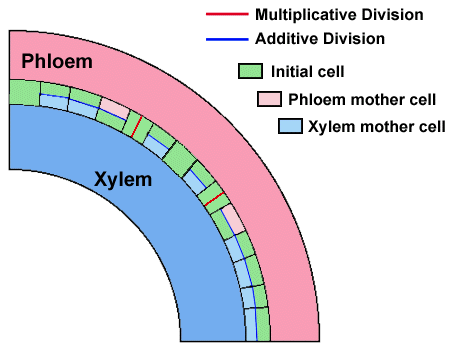
|
After significant activity in the vascular cambium, a stem exhibiting secondary growth might look like the following diagram. The primary xylem is in the center of the stem, while the primary phloem is pushed outward by the new cells that arise from the vascular cambium. Eventually, the primary phloem is crushed into the cortex. The secondary xylem differentiates from the cells that divide off the vascular cambium towards the inside of the stem, while the secondary phloem differentiates from the cells that divide towards the outside of the stem. |
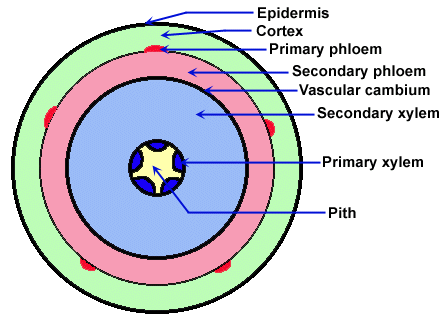
|